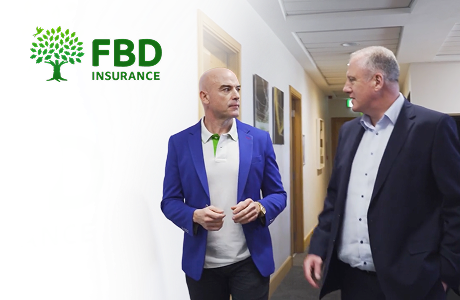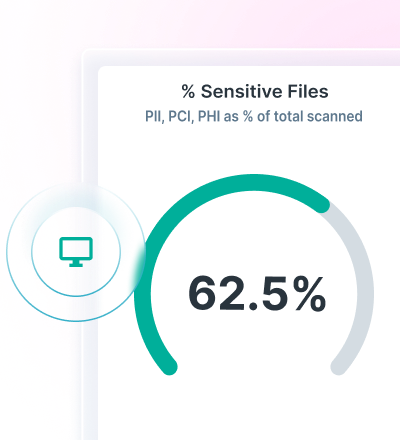Why FinOps Is The Missing Link Between Cloud Innovation & Financial Accountability
0 分鐘閱讀
Cloud computing has unlocked unprecedented agility and speed. Teams can spin up infrastructure, deploy features, and scale solutions in minutes rather than weeks. Yet the very elasticity that makes it appealing is also its Achilles’ heel. Without oversight, flexibility becomes fragmentation, and innovation can quickly evolve into financial sprawl.
Leadership teams often discover this the hard way. Costs rise in unpredictable patterns, invoices grow opaque, and departments deploy cloud resources with little coordination. Innovation accelerates, but accountability lags behind. This is precisely what FinOps is designed to augment.
What is FinOps?
At its simplest, FinOps (Financial Operations) is a discipline for managing cloud financials with the same rigor as other enterprise resources. But more than accounting, it’s a cultural shift.
FinOps brings together engineering, finance, procurement, and business leaders under a shared framework. Instead of debating cloud costs in isolation, all stakeholders collaborate around one version of truth: what’s being spent, why, and whether it delivers value. This collaboration transforms cost conversations from reactive blame into proactive strategy.
So what FinOps boils down to is a continuous cycle of visibility, optimization, and accountability. Teams gain the ability to:
- Attribute spend to specific projects, products, or customers.
- Translate cloud invoices into a language the business understands.
- Empower engineering teams to make informed trade-offs between performance and cost.
- Align financial decisions with business outcomes.
It’s worth noting that FinOps is not a one-off initiative, but a discipline embedded into every sprint, deployment, and release cycle. Just as DevOps infused operations into development, FinOps merges financial accountability into cloud decision-making.
Why FinOps matters now
The urgency around FinOps is growing for several reasons.
- First, cloud adoption has reached a point of saturation. Most organizations now operate in multi-cloud or hybrid-cloud environments where workloads shift between providers, making cost tracking complex. Traditional financial governance processes simply can’t keep up.
- Second, cloud consumption is inherently variable. Engineers spin up instances, expand clusters, or run data pipelines in response to immediate needs. Without real-time visibility, these changes create financial surprises. A proof-of-concept can turn into a multi-million-peso bill overnight.
- Third, boardrooms and regulators are demanding accountability. Investors want predictable ROI. CFOs want reliable forecasts. Compliance bodies want evidence of governance. Without FinOps, the cloud often becomes the one area of IT where accountability is blurry, making leadership uncomfortable with continued investment.
In other words, failing to adopt FinOps undermines the very agility that the cloud was meant to deliver. After all, innovation without accountability is never sustainable.
Core components of an effective FinOps practice
While implementations differ, successful FinOps practices are structured around three pillars: inform, optimize, and operate. Each stage feeds the next, creating a cycle of continuous improvement.
- Inform
Visibility is the foundation. Cloud resources must be tagged, categorized, and monitored with precision. Dashboards need to show real-time usage, instead of just monthly summaries. Crucially, costs should be attributed to the right teams and products, so ownership is clear. When leaders ask where money is being spent, the answers must be accurate and immediate.
- Optimize
Once visibility is in place, organizations can act. This is where rightsizing instances, retiring idle resources, and applying reserved pricing models make a measurable impact. Automation becomes a force multiplier, as policies can enforce usage limits or shut down underused environments automatically.
- Operate
True maturity comes when governance is embedded in day-to-day workflows. Cost isn’t something reviewed once a quarter but discussed in sprint planning, product roadmaps, and executive reviews. Practices like showback or chargeback ensure every team is accountable for its consumption. Over time, this builds a culture where financial accountability is part of engineering DNA.
Strategic benefits of adopting FinOps
The payoff from FinOps extends far beyond cost savings.
- Transparent financial control — Leaders can explain, defend, and forecast cloud spend with confidence. Instead of reacting to surprises, they shape financial strategy from the onset.
- Cross-functional alignment — FinOps creates a common language for finance, engineering, and product leaders. Cost and value discussions stop being siloed and start being collaborative. Reduced friction accelerates decision-making.
- Business speed with oversight — Perhaps most importantly, FinOps proves that financial discipline and innovation are not mutually exclusive. Organizations can retain cloud agility while making sure spend is predictable, defensible, and tied to outcomes. In a competitive landscape, that balance is the difference between sustainable scaling and reckless overextension.
What industry leaders do differently
Enterprises that excel at FinOps treat it less as a cost-control exercise and more as a driver of cloud maturity. The distinction lies in how they embed accountability and visibility into their operating models.
- Shifting cost considerations left — Leaders don’t wait until a project hits production before thinking about spend. Instead, they integrate cost visibility into architecture and design decisions. Engineers know from the outset how infrastructure choices translate to dollar impact. This prevents surprises downstream and fosters a culture of proactive responsibility.
- Decentralized ownership with central visibility — Rather than leaving financial accountability to finance teams alone, leaders distribute responsibility to product and engineering teams. Budgets are not abstract, but are tied directly to service owners, who see the cost impact of every deployment. At the same time, central dashboards give executives a consolidated, enterprise-wide view.
- Clarity through attribution — Best-in-class enterprises link costs directly to specific business services, customer segments, or initiatives. This transforms financial discussions from vague budget questions into targeted conversations: “This product line consumes 40% of our storage budget. What changes should we consider?” Attribution reframes financial dialogue in a language that’s actionable and aligned.
Overcoming the roadblocks to FinOps adoption
Despite its appeal, implementing FinOps is also fraught with challenges. Common roadblocks include:
- Inconsistent tagging and data silos — Without standardized tagging policies and integrated data sources, cost attribution becomes unreliable. A single missing label can obscure thousands of dollars in spend. Industry leaders tackle this through automation. Mandatory tagging policies, enforced by infrastructure-as-code, eliminate gaps at the source.
- Cultural inertia — For many engineering teams, financial accountability feels outside their mandate. Leaders address this by making financial responsibility a shared success metric: engineers are recognized for cost efficiency as much as uptime and performance.
- Tooling gaps — Traditional financial systems aren't designed for the variability and speed of cloud consumption. Real-time visibility and automated optimization require specialized platforms and integrations. Forward-thinking organizations invest in modern tools that combine observability with governance, rather than trying to retrofit legacy systems.
- Fear of slowing innovation — A lingering perception is that financial oversight means bureaucratic red tape. FinOps leaders counter this by demonstrating how cost awareness can actually accelerate delivery. When engineers understand trade-offs, they make smarter choices upfront.
Final word on FinOps as an innovation enabler
FinOps is often misunderstood as a guardrail against overspending. In reality, it’s the missing link between the creative potential of the cloud and the financial discipline that enterprises need. It ensures that agility and accountability move in lockstep.
By aligning teams, embedding financial visibility into operations, and treating spend as a business conversation rather than an afterthought, FinOps transforms cloud consumption into a competitive advantage. Organizations that embrace this mindset scale with confidence and innovate with speed while remaining fiscally disciplined.
Pair FinOps with cloud data security
Managing cloud costs is only part of the equation. Protecting sensitive data as it moves through cloud platforms is equally critical. Forcepoint’s Cloud Access Security Broker (CASB) solution complements FinOps by providing deep visibility and control over cloud applications and data usage. It helps enterprises enforce governance, secure sensitive information and maintain compliance without undermining the agility that makes cloud powerful. Learn how Forcepoint’s CASB can elevate your cloud strategy today.
在文章中
X-Labs
直接將洞察力、分析與新聞發送到您的收件箱










